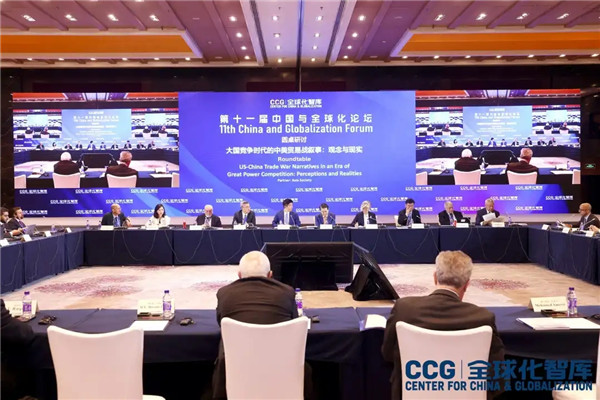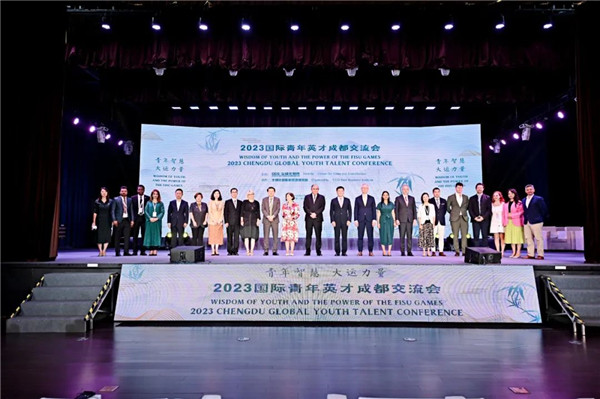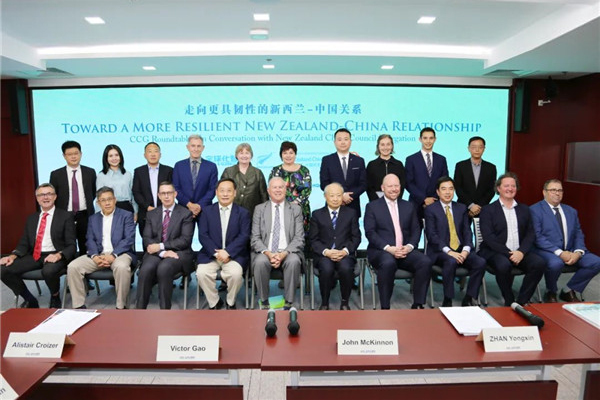CCG Webinar | Rebooting the BRI amidst the pandemic
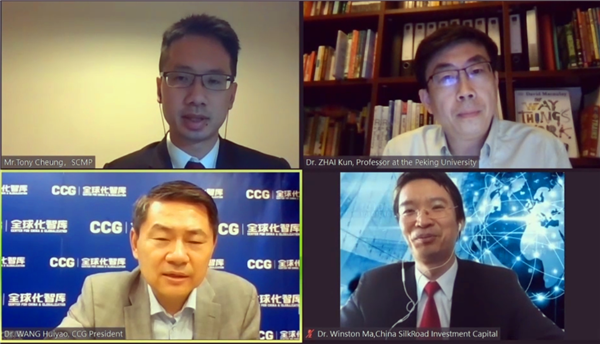
On August 26, 2020, the Center for China and Globalization (CCG) held a webinar on the theme “Rebooting the Belt and Road Initiative amidst the pandemic: Challenges, prospects, and innovations.” The event featured leading scholars and experts discussing topics such as the social and economic impacts of the COVID-19 pandemic on the Belt and Road Initiative (BRI) and the role of Hong Kong and the Greater Bay Area in facilitating the sustainable BRI investments in response to the pandemic. Tony Cheung, correspondent at the South China Morning Post (SCMP) hosted the event.
COVID-19, the surge of nationalism, and global cooperation
Ma Wenyan, former managing director of China Investment Corporation and adjunct professor at New York University, said that when we are thinking about the BRI, we generally think of infrastructure construction. However, from a more holistic perspective, we need to consider the BRI as a concept of global interconnection and global collaboration. He mentioned that at the 2016 G20 Hangzhou Summit, leaders of many countries reached a consensus on jointly promoting the development of the digital economy and jointly signed the G20 Digital Economy Development and Cooperation Initiative which included a digital economy policy document that aimed at injecting new impetus into global economic growth. Ma added that subsequently, at the 4th World Internet Conference held in December 2017, China and seven countries jointly launched the BRI Digital Economy International Cooperation Initiative, which aimed to further focus on the digital Silk Road for interconnection. After the concept of the Digital Silk Road was put forward, Ma said that it gave new connotations to the BRI. He noted that at a time when the global economy is facing unprecedented challenges from the pandemic, the Digital Silk Road has become more important. However, Ma said that around the BRI, in addition to debt, project management and other challenges still exist, with the Digital Silk Road, there are new concerns such as data privacy, network security, and cross-border data management.
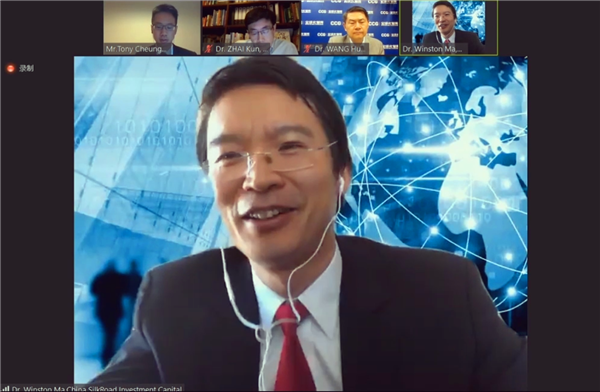
CCG Nonresident Senior Fellow and Professor of the School of Contemporary International Relations at Peking University Zhai Kun pointed out that in the past seven years, the keyword in the BRI has been integration, but under the impact of the pandemic, integration has been negatively affected. If the previous BRI was version 1.0, the current BRI is version 2.0. How to transition from version 1.0 to version 2.0 is a challenge.
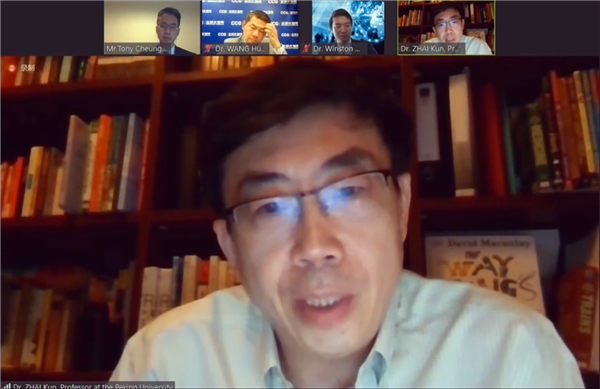
Zhai said that the BRI is facing six challenges: First, global connections are hindered amidst the pandemic and the BRI is facing challenges both domestically and internationally; secondly, policy design is a challenge because of this. Thirdly, the BRI is global, but not regional enough. The new trend of global development is regional cooperation, such as the European Union (EU) and the Association of Southeast Asian Nations (ASEAN). How China cooperates with the EU, ASEAN and other organizations is a new challenge. Fourthly, the pandemic has triggered economic nationalism, and it is difficult for China to cooperate with some countries. At the Second Belt and Road Forum for International Cooperation, President Xi Jinping proposed to build a global interconnection partnership, but such a partnership is now difficult to establish. Fifthly, the five cooperation priorities the BRI set out, including policy coordination, facilities, unimpeded trade, financial integration and people-to-people ties face headwinds. During the pandemic, the public health infrastructure of many countries is particularly facing severe challenges. Lastly, the biggest challenge at present is the challenge of the United States to China. The United States is now using its Indo-Pacific policy to check the BRI.
A Digital Silk Road?
CCG President Wang Huiyao said that the Digital Silk Road is currently the most urgent, realistic and attractive aspect of the BRI. He noted that during the pandemic, the potential of the digital economy has been shown. He added that things like online education have changed the daily routines of individuals. Wang pointed out that it will be helpful if this new normal state can be integrated into the BRI. In addition, he said that public health infrastructure is now the top priority of the BRI and the concept of a Silk Road of the health industry was also put forward after the outbreak of COVID-19. Wang said that China is now developing a vaccine for COVID-19 and this should contribute to the BRI in the medical treatment industry. He also pointed out that the BRI in infrastructure, including green infrastructure, will be a key driving force for the BRI in developing countries and even developed countries in the future.
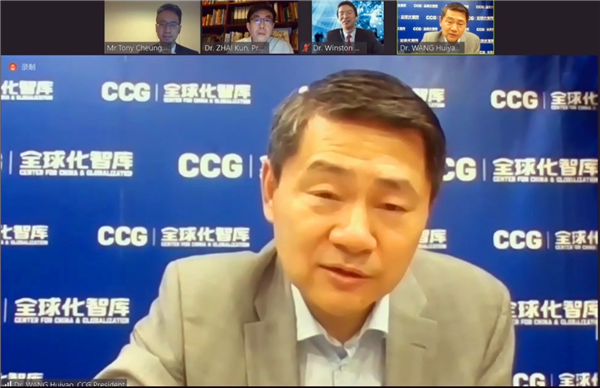
US-China cooperation benefits the BRI
Zhai Kun said that Chinese scholars are looking for space for cooperation with the United States in the field of digital economy. In this field, China and the United States have room for innovation and cooperation. He said that China is advancing the construction of infrastructure in the BRI countries, while the United States has launched the Blue Dot Network (BDN) plan to counter the BRI. The EU, Japan and India have also launched plans in the Indo-Pacific region to promote the development of digital infrastructure. In addition, ASEAN also has a smart city network plan, and China and the United States are also partners in this project. Zhai also pointed out that China can maintain good relations with Singapore and other Southeast Asian countries and European countries, and use this as a bridge to promote Sino-US relations.
Wang Huiyao said that there are many ways to reduce the differences between China and the United States. First, most of the top 20 digital companies in the world are Chinese and American companies. Under the G20 framework, there are B20, T20, and Y20 cooperation mechanisms in the fields of business, think tanks, and youth talent, respectively. He said that it is also possible to establish the D20 for cooperation in the digital field, involving the world’s top 20 companies in this field, and establish a communication and cooperation mechanism between them. Second, since the differences between China and the United States are increasing, China and the United States can work together to promote the economic development of developing countries under the cooperation mechanism of the Asian Infrastructure Investment Bank and the World Bank. This can also increase the attractiveness of the BRI.
The future lies in developing countries
Ma Wenyan pointed out that when talking about the digital economy, people need to pay attention to the fact that there are 300 million people in the world who do not have an Internet connection. Therefore, he suggested paying more attention to developing countries. Ma said that the people of these countries worry that they cannot complete the transition to the digital economy. At the same time, he said that the people of these countries also worry that artificial intelligence will replace their jobs. In addition, he said that they will find that they cannot replicate the pattern of China’s rise. Because in the past, Ma said that China had a large amount of cheap labor and low-cost manufacturing to enable economic development, but now artificial intelligence has brought higher efficiency to various fields, and it has also brought more challenges to developing countries.
Zhai Kun said that in the public domain, China provided medical assistance to African countries during the pandemic and established medical centers in Africa. He said that Africa is the region that China should assist the most. In the private sector, he added that companies such as Alibaba and Tencent have provided technical assistance to African countries, such as tracking the spread of new coronary pneumonia.
Wang Huiyao said that Africa is a new hope for world economic development, and there are a lot of young laborers there. He mentioned that in the “China-Africa Dialogue: Challenges and Cooperation Opportunities under the Epidemic” organized by CCG, African ambassadors to China stated that 55 African countries have formed a free trade zone. Therefore, he noted that Africa’s development prospects are still very good.
Greater Bay Area and the BRI
The Guangdong-Hong Kong-Macao Greater Bay Area (GBA) has the political advantages of “one country, two systems” and a highly open market. The supporting role of the GBA in the construction of the BRI is also a topic of concern for this webinar.
Zhai Kun pointed out that Shenzhen is currently building a smart city and has participated in the ASEAN smart city plan. He added that Shenzhen has shared new technologies, especially digital economy technologies, with many underdeveloped countries such as Cambodia and Laos.
Wang Huiyao said that the GBA will become the center of innovation in China. In addition, he said that the GBA will improve the quality of the BRI in terms of software and hardware facilities. Wang also said that Hong Kong is a financial center, information center, and talent center, and Shenzhen, as a manufacturing center, innovation center, and talent center, will become the two wings of the GBA, driving China’s development and the BRI development.
